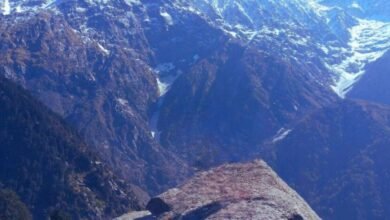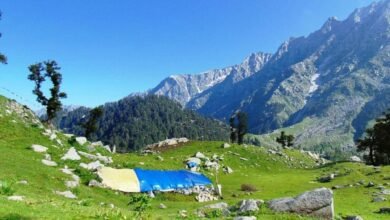Nag Tibba Trek: Discover the Serene Beauty of the Lesser Himalayas

The Himalayas, one of the world’s most majestic mountain ranges, are known for their breathtaking beauty and awe-inspiring landscapes. While the mighty peaks of the Greater Himalayas like Mount Everest and Kanchenjunga command global attention, there are hidden gems nestled within the Lesser Himalayas that offer an equally enchanting experience. One such hidden treasure is the Nag Tibba Trek, a journey that allows trekkers to discover the serene beauty of the Lesser Himalayas.
Introduction to Nag Tibba
Nag Tibba, often referred to as the “Serpent’s Peak,” is the highest peak in the Nag Tibba range of the Lesser Himalayas. This trek is situated in the Uttarakhand state of India, offering an escape from the chaos of city life into the tranquil embrace of nature. The Nag Tibba Trek is an ideal adventure for both beginners and experienced trekkers, as it offers a moderate level of difficulty, ensuring that almost anyone can enjoy this mesmerizing journey.
The Charm of Nag Tibba Trek
- Proximity to Mussoorie: The Nag Tibba Trek is conveniently located just a short drive away from Mussoorie, a popular hill station known for its lush greenery and colonial charm. Trekkers often begin their journey from Pantwari, a small village near Mussoorie, which serves as the base camp for this adventure.
- Scenic Beauty: The trek boasts an array of scenic delights, including dense forests, meadows, and panoramic views of snow-capped peaks. The trek’s lower altitudes feature oak and deodar forests that open up to lush meadows, providing trekkers with a diverse and ever-changing landscape.
- Cultural Exploration: The trail to Nag Tibba is also an opportunity to explore the local culture of the region. Villages en route are inhabited by the warm and hospitable people of Uttarakhand, who often welcome trekkers with open arms, offering a glimpse into their way of life.
- Spectacular Sunrise and Sunset Views: One of the trek’s highlights is the stunning sunrise and sunset views. The summit of Nag Tibba offers a perfect vantage point to witness the sun casting its golden glow on the snow-covered peaks.
- Wildlife Encounters: While trekking through the lush forests, you might have the chance to spot various wildlife species, including leopards, langurs, and a variety of bird species. Keep your eyes peeled, and you might be rewarded with a memorable encounter with the local fauna.
- Serenity and Solitude: Unlike some of the more popular Himalayan treks, Nag Tibba provides a serene and less crowded experience. This relative solitude allows trekkers to truly connect with nature and themselves.
The Nag Tibba Trek Itinerary
The Nag Tibba Trek usually spans over two to three days, covering approximately 16 kilometers in total.
Day 1: Pantwari to Nag Tibba Camp
- Begin your journey from Pantwari, which is accessible by road from Dehradun and Mussoorie.
- Trek through dense forests and meadows to reach the Nag Tibba base camp.
- Spend the night at the base camp in tents and enjoy a bonfire under the starry sky.
Day 2: Nag Tibba Summit and Return
- Rise early to start the ascent to Nag Tibba summit.
- After reaching the summit, revel in the breathtaking views of the Himalayan ranges.
- Descend back to the base camp and trek back to Pantwari.
Day 3: Return to Pantwari and Departure
- Return to Pantwari and bid farewell to the serene mountains.
What to Carry on the Nag Tibba Trek
To have a comfortable and enjoyable trek, it’s essential to pack appropriately.
- Trekking Gear: Sturdy trekking shoes, trekking poles, and a good-quality backpack.
- Clothing: Layered clothing to adapt to changing temperatures, waterproof jacket, and warm clothing for the nights.
- Camping Gear: A good quality tent, sleeping bag, and a sleeping mat.
- Food and Water: Carry an adequate supply of packaged food, and make sure to have a reusable water bottle to stay hydrated.
- First Aid Kit: Basic medical supplies including bandages, antiseptic, and pain relievers.
- Miscellaneous: Headlamp, power bank, toiletries, and garbage bags to carry your waste.
Tips for a Successful Nag Tibba Trek
- Physical Fitness: While Nag Tibba is considered a moderate trek, it’s essential to be in reasonably good physical condition to enjoy it to the fullest. Regular exercise and stamina-building activities will be beneficial.
- Local Guides: It’s recommended to hire a local guide who knows the terrain and can ensure your safety throughout the journey.
- Responsible Trekking: Respect the environment and local communities. Carry all your trash back with you, avoid using plastic, and follow the principles of Leave No Trace.
Conclusion
The Nag Tibba Trek is an enchanting journey that introduces trekkers to the serene beauty of the Lesser Himalayas. With its proximity to Mussoorie, stunning landscapes, and cultural experiences, it offers a unique blend of adventure and tranquility. As you ascend Nag Tibba’s summit and witness the majestic Himalayan panorama, you’ll find yourself humbled by the grandeur of nature. This trek is not just a physical adventure; it’s a spiritual and emotional journey that leaves a lasting impression on all those who embark on it. So, pack your bags, lace up your trekking boots, and get ready to discover the serene beauty of the Nag Tibba Trek in the Lesser Himalayas.




